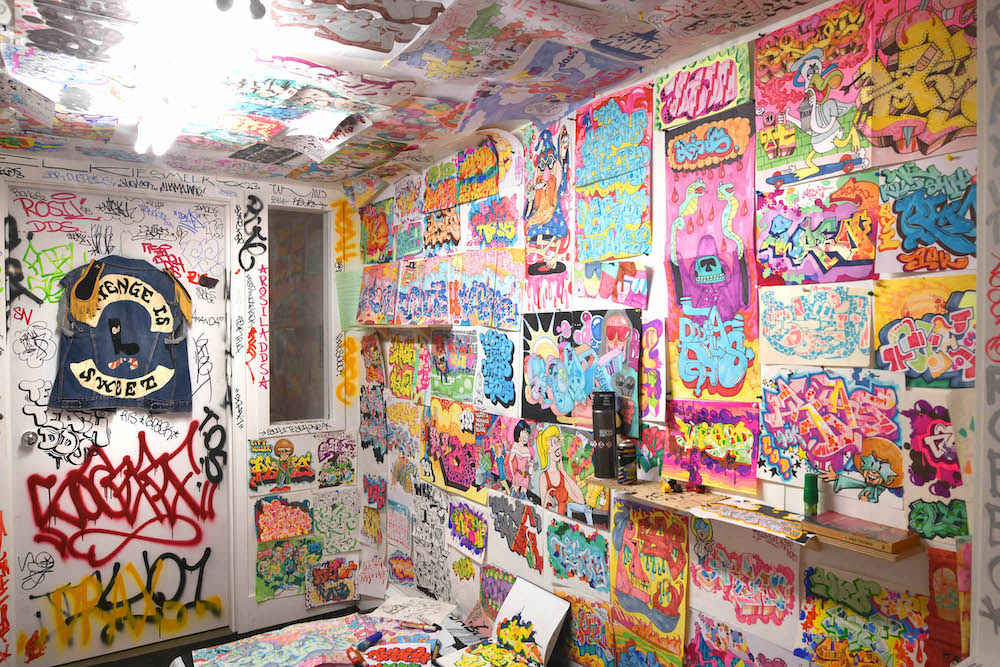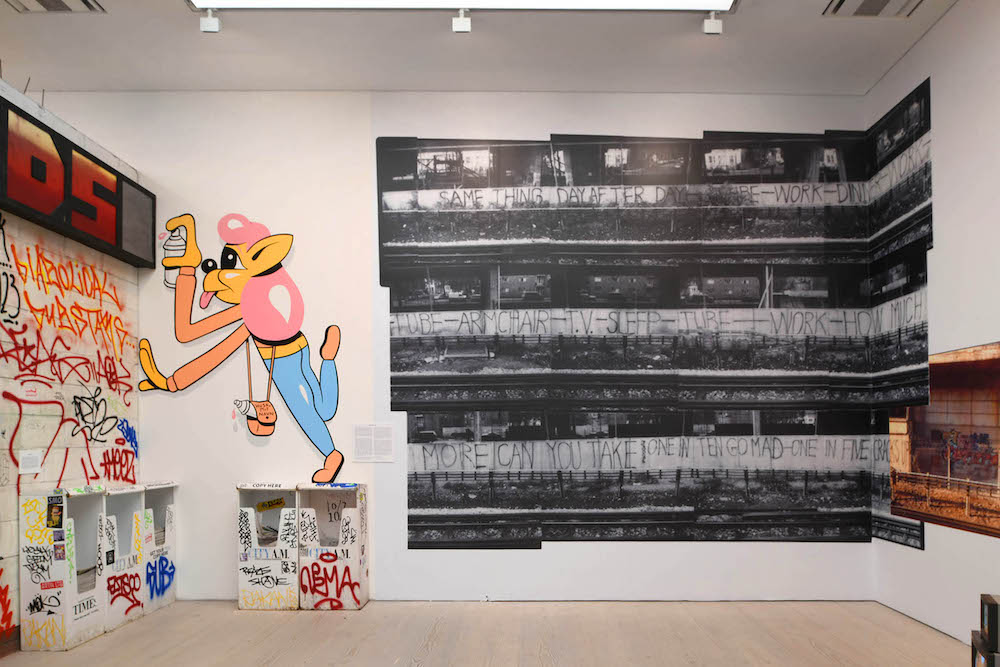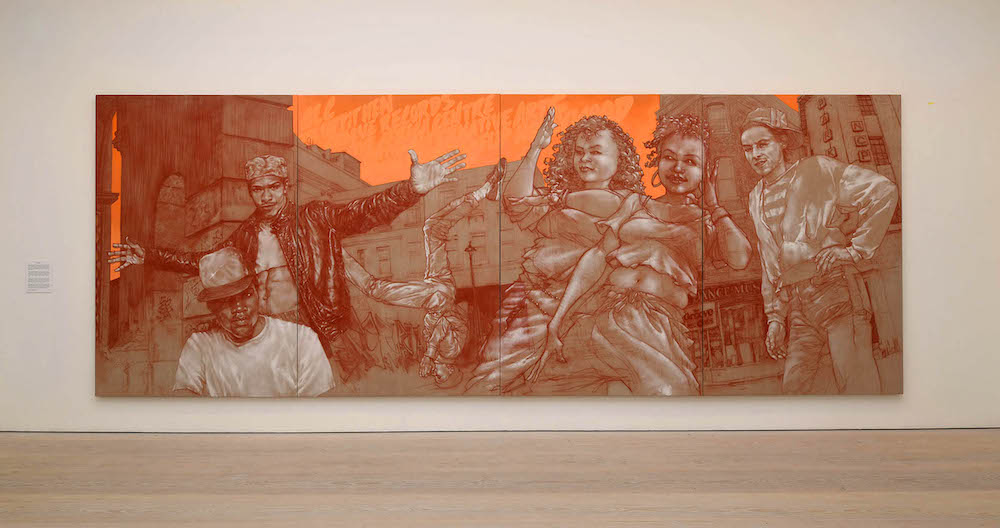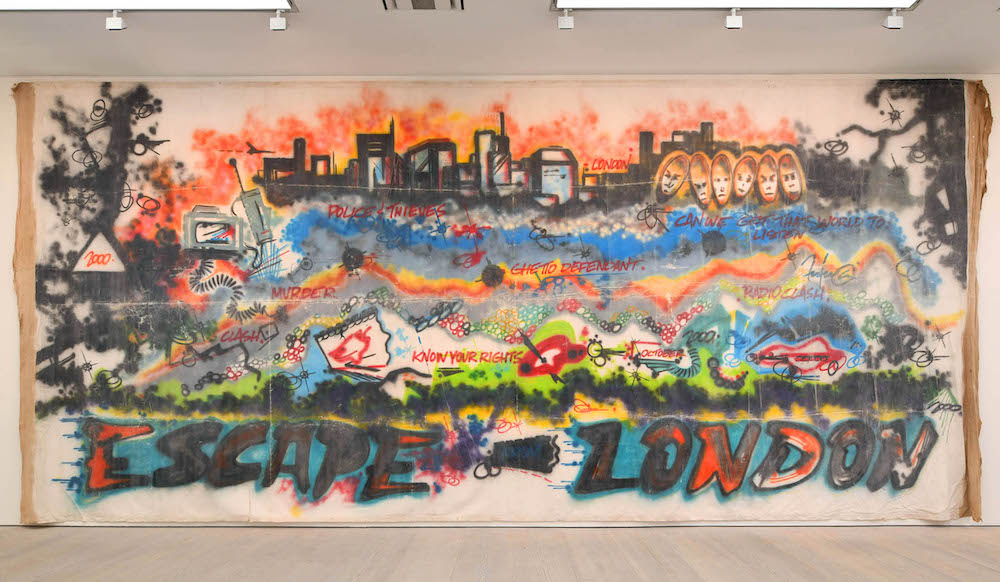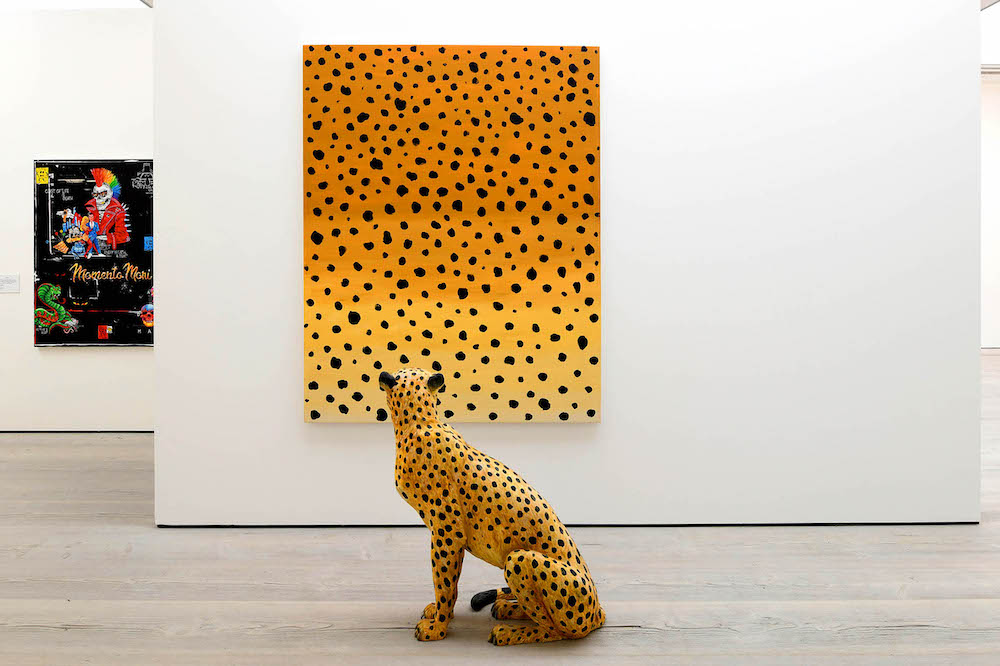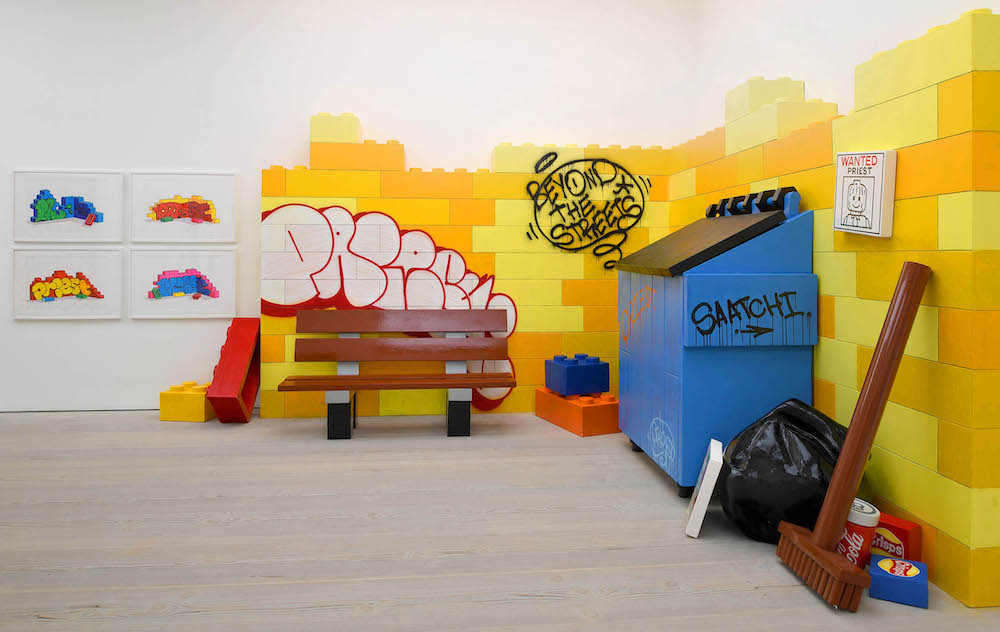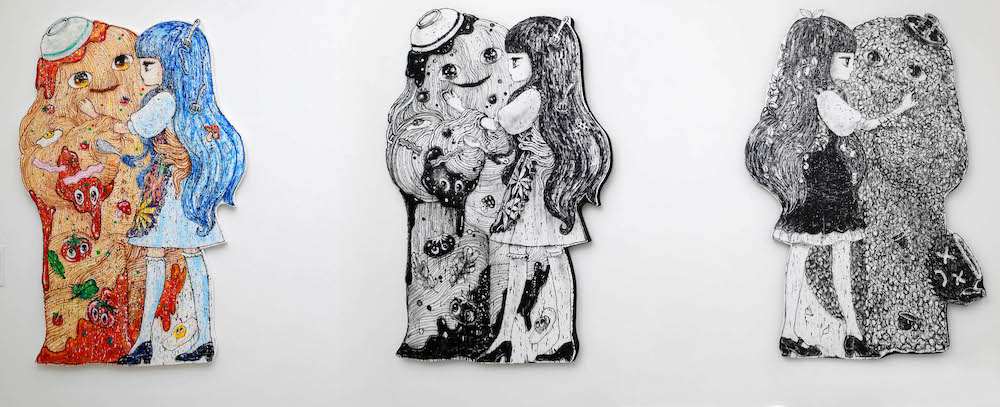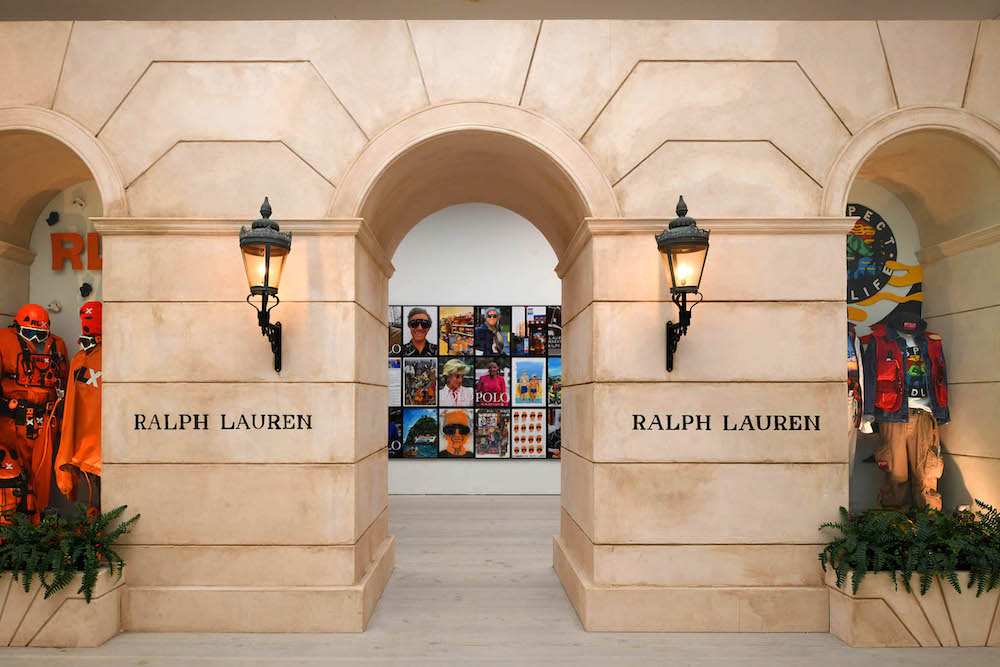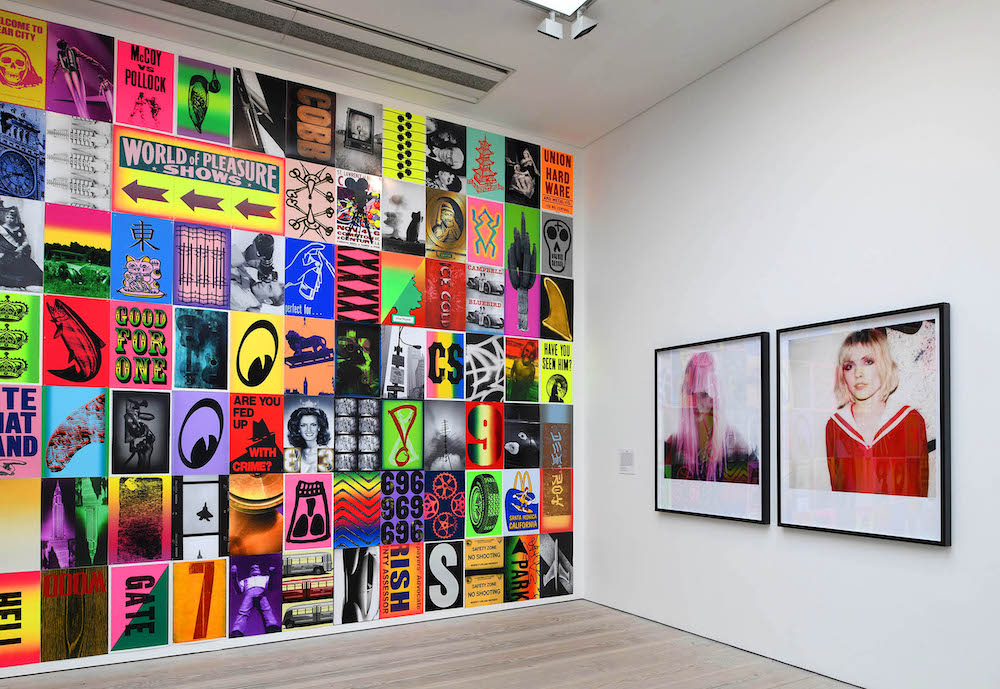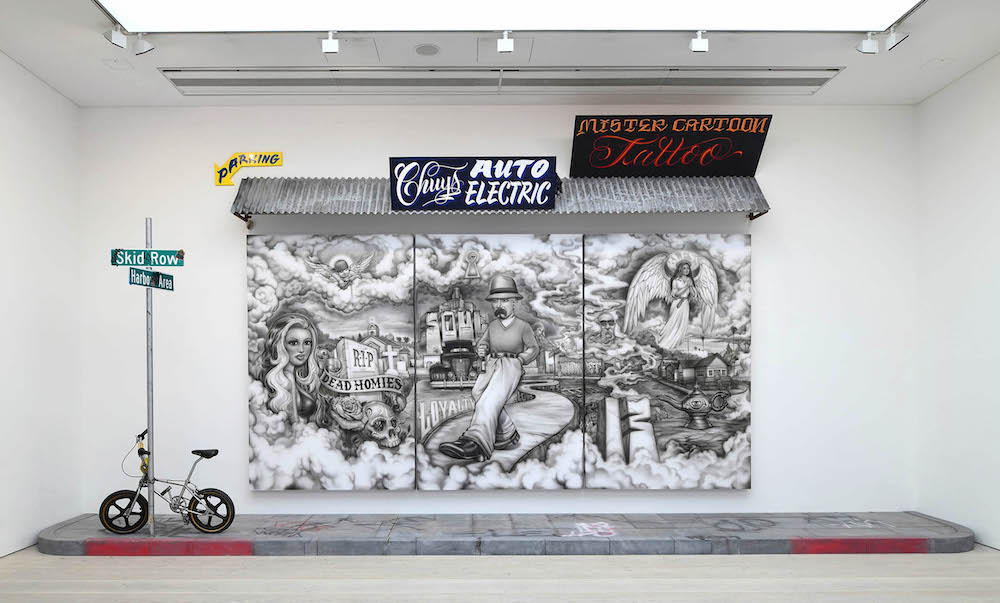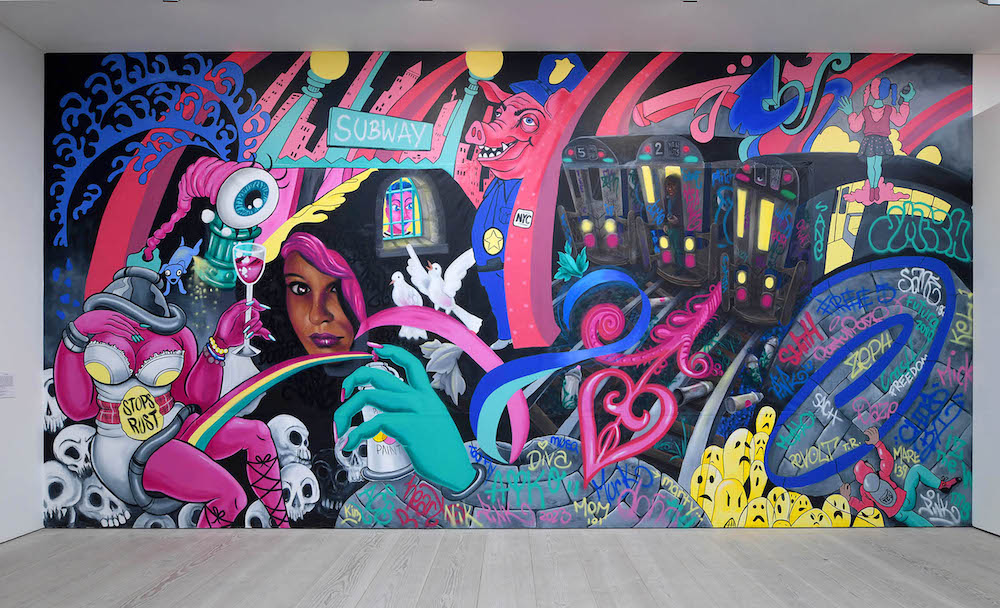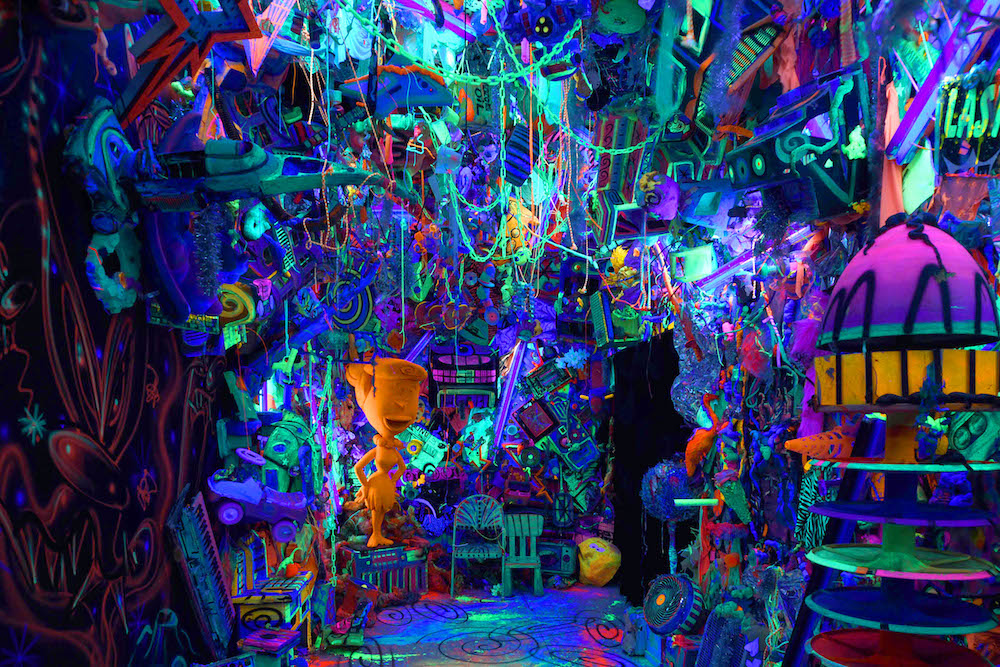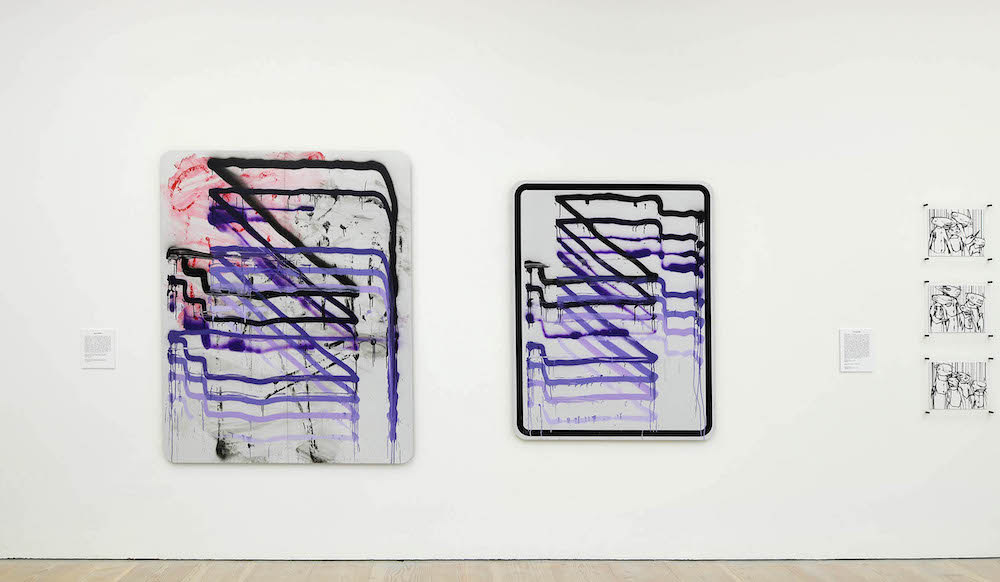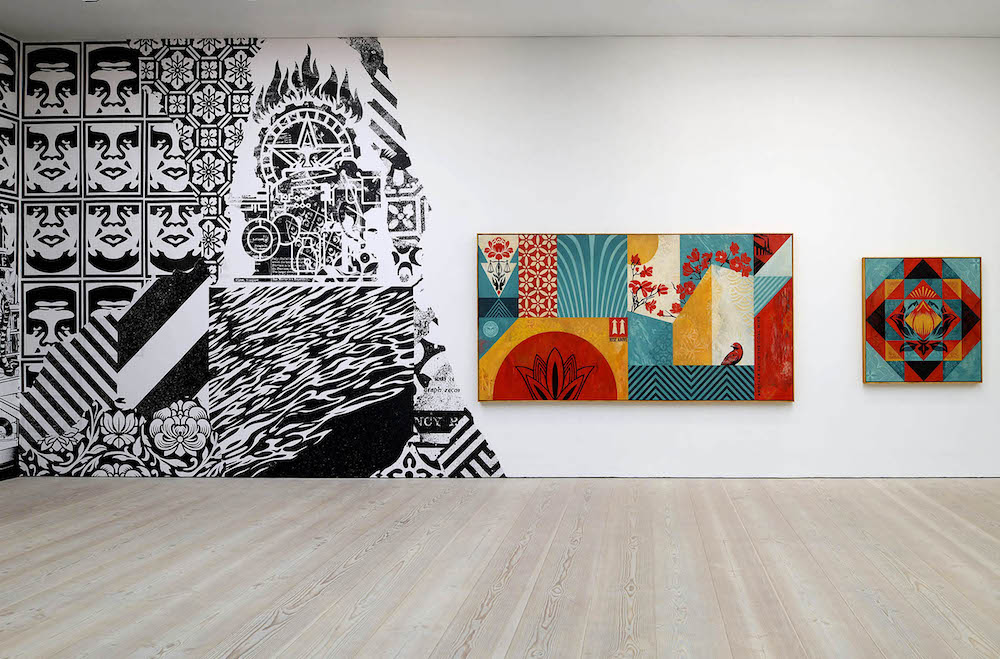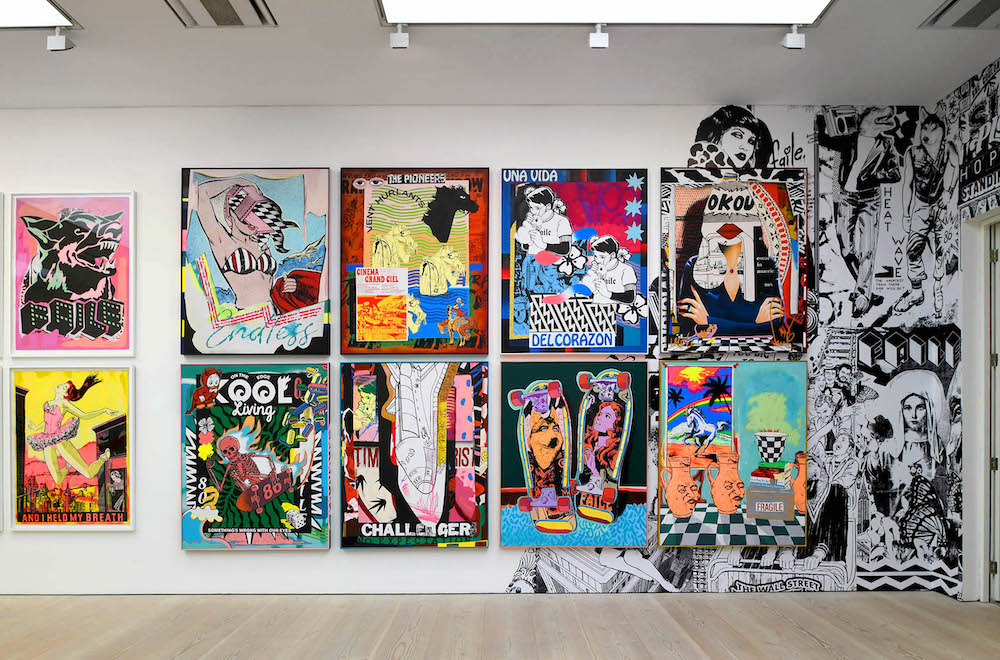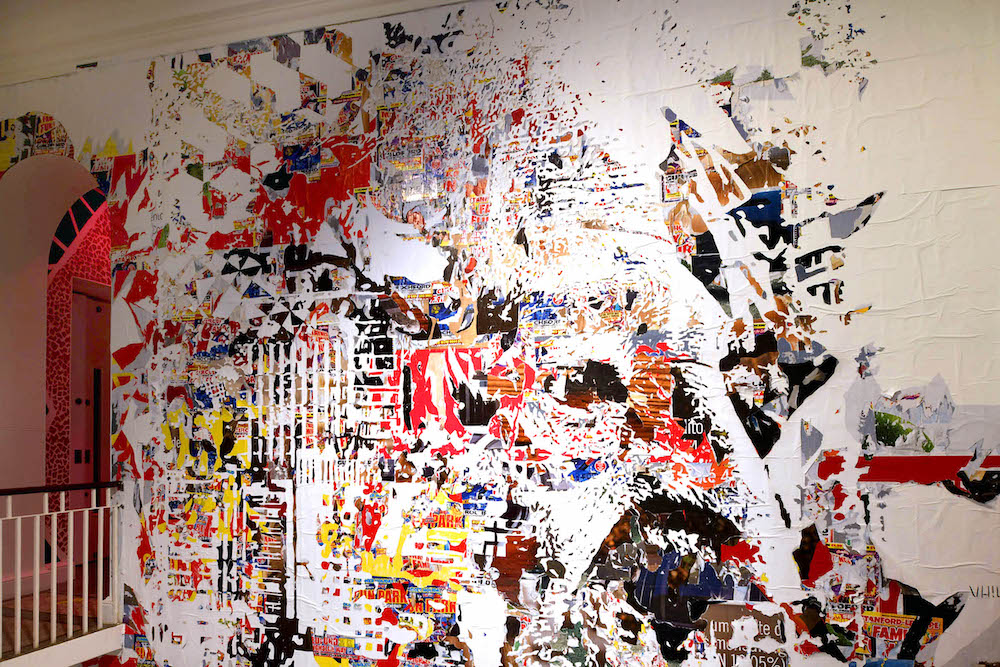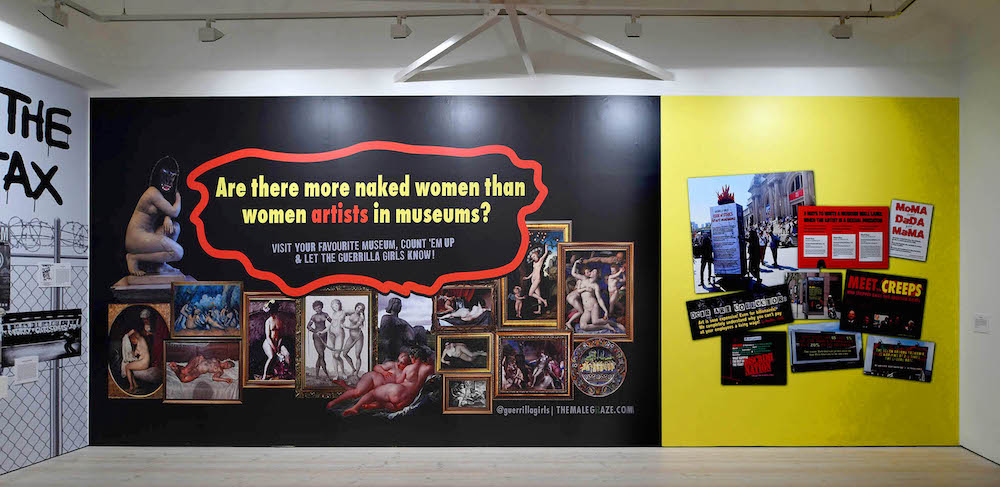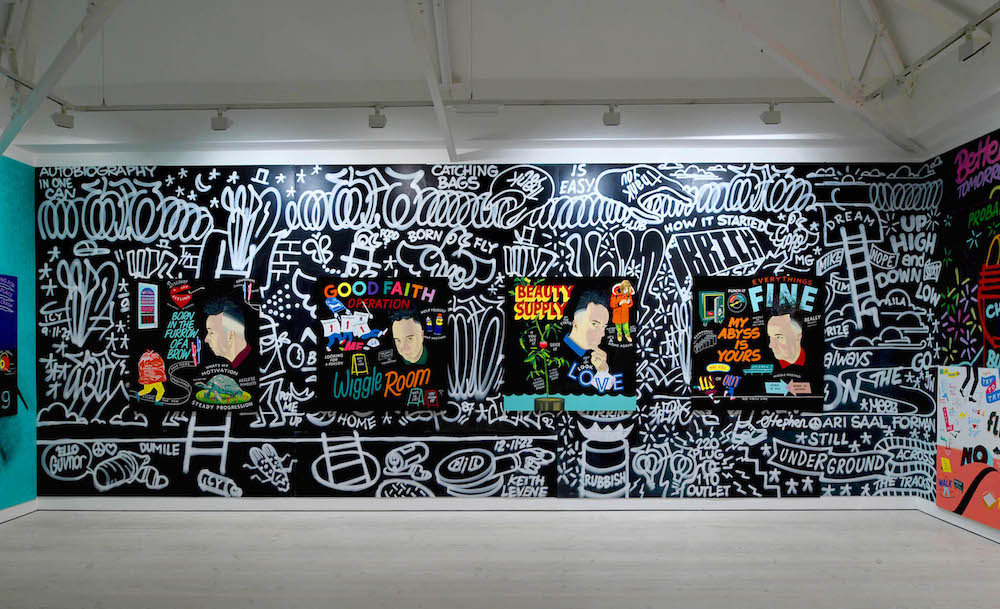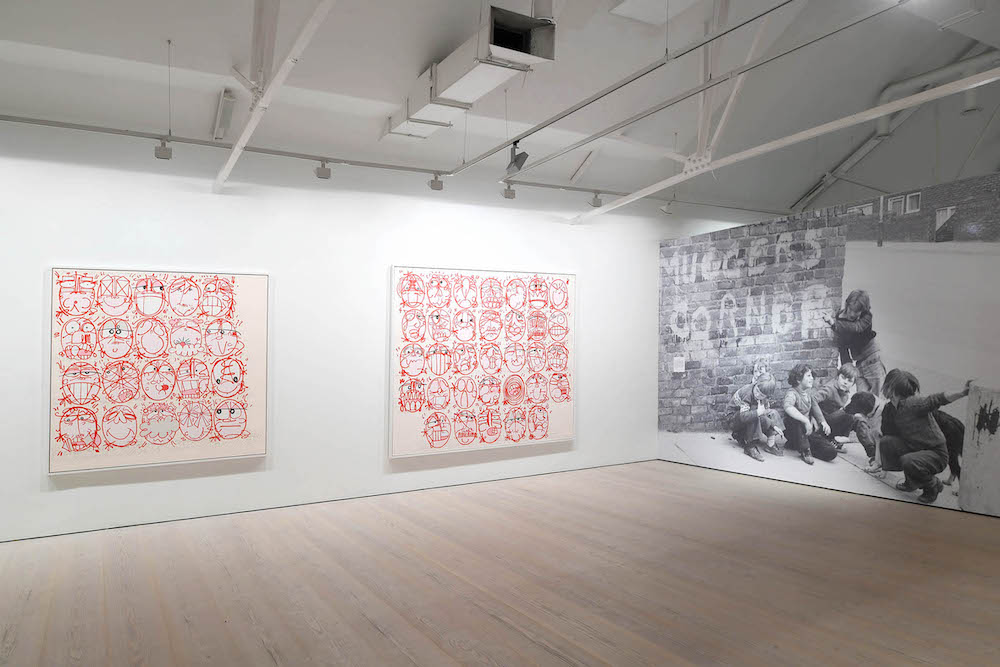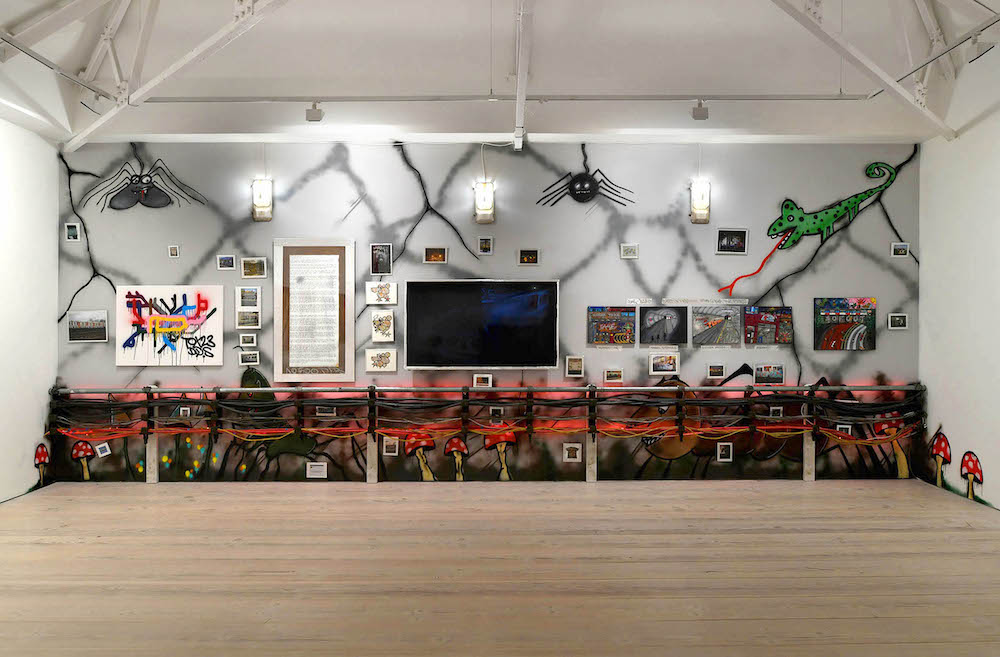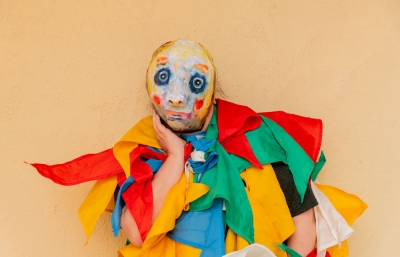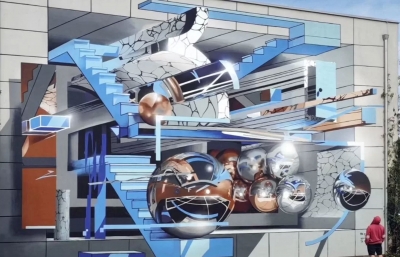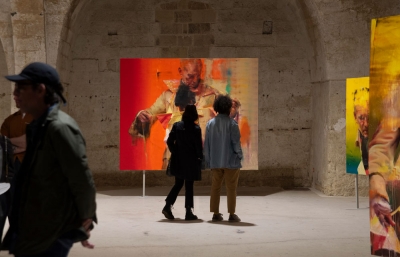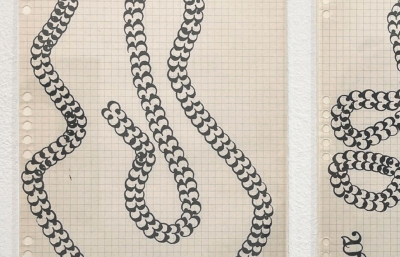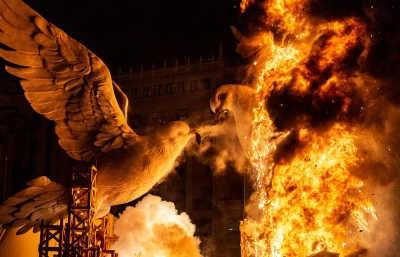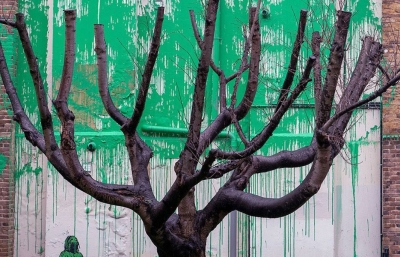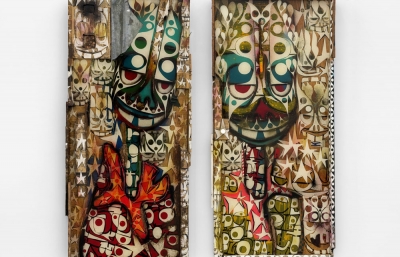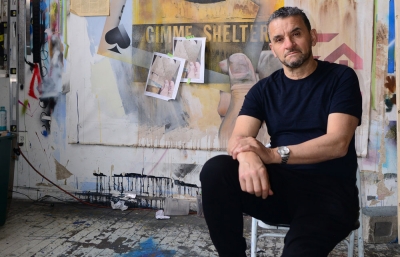BEYOND THE STREETS at Saatchi Gallery in London is overwhelming—in the best possible way. Cramming 50+ years of a formerly underground art movement into 70,000 square feet of high-end museum space has left the Saatchi Gallery groaning at the seams, with graffiti tags viscerally puncturing usually off-limits museum wall plaques and spilling out into the otherwise immaculate Sloane Square, to the consternation of the local council.
But – bear with me – this is not necessarily a bad thing. If anything, it may be living proof of that aspect of street art and graffiti that remains resolutely uncontainable, despite efforts to co-opt, contain and commercialise this unruly art form.
Street art and graffiti are forms of creative expression that do not always translate well to museums. As RJ Rushmore has noted, work on the street is ultimately “a kind of documentation of a performance. Writers have to climb fences, repel down buildings, and break the law in highly visible places without being seen.” However, the institutionalised display of street art and graffiti often fails to capture this “wild” creative energy. Nick Riggle once argued that “what is exhibited in the museum is at most a vestige of street art… the experience of seeing street art in designated art spaces invariably feels dead and inauthentic.” At the very least, displacing work from the street to the gallery seems likely to diminish its aesthetic power and can fundamentally alter its meaning.

But by working knowingly with these tensions, on a monumental yet micro scale, Beyond the Streets London has managed to tune into, rather than dilute, this unruly aesthetic energy. There is no master narrative tying Saatchi’s three floors and 13 galleries together, though a suggested route is provided by wayfinding floor stickers, and minimal wall plaques do some work towards linking the thematic chapters together. This is an unauthorised contemporary art form, so it is thus perhaps fitting that there are competing subcultural narratives woven throughout the museum.
Together, the spaces seem to capture something of the unpredictable and capricious quality of work on the streets. Some galleries feature more traditionally curated high-profile names (Shepard Fairey and FAILE’s ‘Street Art to Studio’ chapter), others present meticulously researched subcultural timelines linking the development of graffiti and street art in the UK and the US - through archival photography, ephemera and fashion; and a series of arresting installations serve to break up the long journey through more conventional gallery spaces – London-based Paul Insect’s disarmingly sinister animated puppets in his ‘Rubbish Stuff’ shop beckon viewers closer; Kenny Sharf’s ‘Cosmic Cavern’ offers a high voltage trip through an overwhelmingly bright yet strangely musty cave of recycled repainted objects; and Todd James’ ‘The Vandal’s Bedroom’ presents an intimate space overflowing with unguarded graffiti paraphernalia encased and locked in time by a harsh forensic wall of plexiglass.
On Saatchi’s ground floor, a recreated record store displays subcultural artefacts (records, posters, magazines, etc) in timeless situ. Unusually, this installation actively invites participation. Visitors can pick up and play the records and rifle through the posters. At the entrance to the store, a sea of stickers – some placed by the curators, and many more placed by visitors – adorn the doorway. These may seem minor details, but one of the things that marks street art and graffiti as distinct from other contemporary art forms is this very possibility of participation – in theory, anyone may add their own creative marks to the streets. However, museum versions of participation are usually highly constrained, and physically interacting with the exhibits is ordinarily forbidden. The visceral sense of trespass offered by ‘Trash Records’ represents a rare experience in institutional art space, and one that provides visitors with a crucial connection to the anarchic founding energy of this genre.
The London mix of Beyond the Streets, whilst still US-centric, has been consciously re-anchored in British and European street art and graffiti - albeit inevitably with countless omissions. In acknowledgment of the notable underrepresentation of women artists (both within graffiti and street art, and contemporary art in general) BTS takes a laudable step forward in featuring a full-length Guerrilla Girls vinyl wall. However, while this work certainly takes up space and may encourage viewers to engage in critical reflection, in isolation this grand visual gesture falls short as a critical response to the Guerrilla Girls’ fundamental challenge to shake up, interrogate and ultimately rebalance gender inequity and absence in the art world. But it’s a major step in the right direction.
The other elephant in the exhibition is of course Banksy. Towards the end of the show, a decal featuring a blank city wall with a ‘No Ball Games’ sign provides an apparent nod to the palpable absence of the world’s most iconic street artist. The blank wall silently condemns the removal – or theft – of much of Banksy’s work from city walls for private auction in order to populate unethical and unauthorised – but highly lucrative – touring Banksy museum shows, without the permission of the artist. In this context, Banksy’s absence is not an afterthought but rather a critical observation.

The start and end galleries exemplify the curators’ vision in contextualising the British version of the show. The opening gallery begins with perhaps the most iconic of early British graffiti – King Mob’s 1972 trackside slogan, "SAME THING DAY AFTER DAY- TUBE - WORK - DINNER - WORK - TUBE - ARMCHAIR - TV - SLEEP - TUBE - WORK - HOW MUCH MORE CAN YOU TAKE? - ONE IN TEN GO MAD, ONE IN FIVE CRACKS UP.” In contrast to the now globally dominant style-based graffiti that developed in North America during the 1970s, British graffiti of the same era made often surreal and humorous statements designed to actively engage and enchant everyday viewers, following the Situationists’ aim to playfully disrupt the junctures of everyday life. Poet and dramatist Heathcote Williams described the appeal of this form of graffiti: “It’s just a thought, which […] bubbles up in an engagingly mysterious way. You think, ‘What’s that doing there? Who on earth wrote that?’”
Here, as with the rest of this cornucopia of a show, the devil is in the detail. BEYOND THE STREET's wall sized reproduction of King Mob’s 70s graffiti is temporally overlaid with FUTURA2000’s 1981 piece, which is arguably the first documented style-based graffiti to appear in London. The Trans-Atlantic aesthetic collision marked by this moment in time is highly consequential and provides a thoughtful point of departure for this re-anchored iteration of Beyond the Streets.
In the final gallery, Valencia-based Felipe Pantone’s work overwhelms in all dimensions – with the gallery floors, walls and plinths integral players in the disorienting perspective shifting engendered by his immersive geometric op-art. Most visitors appeared to be viewing Pantone’s work through their phones, physically (re)enacting the digital shift in our contemporary modes of engagement with art on the streets – a pivotal closing point for Beyond the Streets, and a provocation for the future of art beyond the streets. —Susan Hansen
BEYOND THE STREETS London is on view at Saatchi Gallery through May 9, 2023. The exhibition is curated by Kim Stephens, Evan Pricco, Raoul Shah and Roger Gastman.

